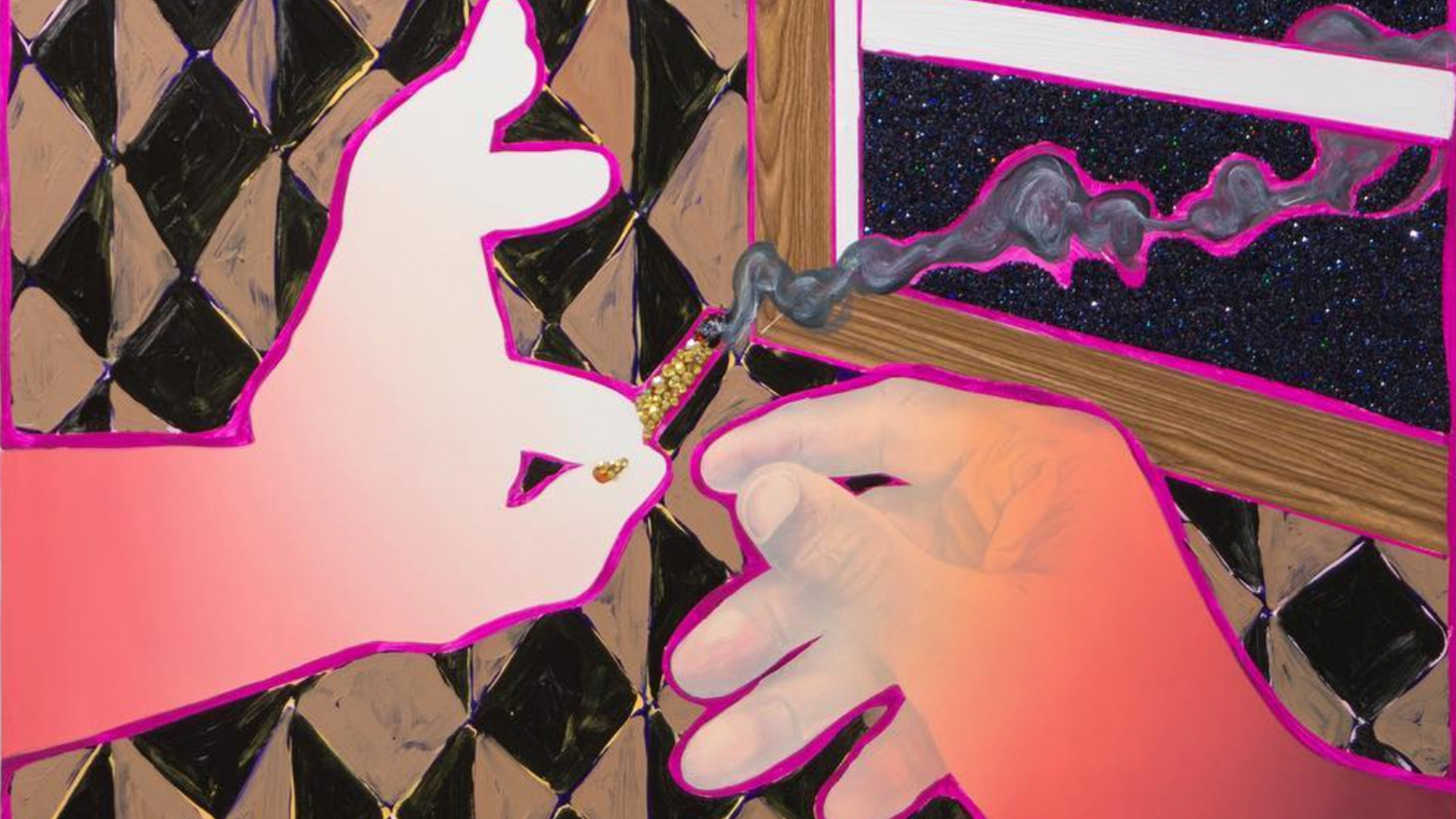
For his inaugural solo exhibition at Kavi Gupta, Professor Devan Shimoyama presents a new body of painting and sculpture inspired by his evolving connections to identity, ancestry, community, and the definition of home. Titled “We Named Her Gladys,” the exhibition is on view March 23 through May 25.
Shimoyama recently became a first time homeowner, purchasing a 1926 Craftsman home in the borough of Brentwood on the outskirts of Pittsburgh. Says Shimoyama, “The house is made of a classic, golden yellow brick that was developed in Pittsburgh. It’s a very Pittsburgh house.” Since moving in, tiny moments of discovery both inside and outside of the house have pulled Shimoyama backwards in time, moving him to grapple with the mythos of ownership, the discovery of secrets, and the ways history intertwines and negotiates with the present. Says Shimoyama, “This body of work has grown out of me thinking about how significant and important it is to own where you live; to maintain and tend to it. Many young people, especially young people of color, shy away from home ownership. This is negative in a lot of ways.”
In many of the paintings, Shimoyama’s own body appears as a shamanistic figure, connecting what is “real” with hints of the unseen world. One painting portrays Shimoyama in his back yard covered in weeds. He has stopped what he’s doing to pick up a dead baby bunny. Another refers to his discovery of evidence of a past fire in the attic. Inside this haunting visual realm it is always twilight. A gradiated sky suggests both morning and night, pausing history to interrogate the vitality of the moment. Says Shimoyama, “I feel like I travel back in time to experience these moments, to digest these events; to become one with the ghosts that are in my home.”
Among the works Shimoyama created for the show is a new sculpture: an adorned, a-frame swing-set with three seats, encrusted with silk flowers and jewelry. This iconic work embodies Shimoyama’s uniquely thought-provoking brand of conceptual purism: simplified forms collaged with eye-catching materials packed with inferred meaning. “Mixed media allows me to be more direct,” he says. “A lot of the materials I use are ornate, bought at stores where you would buy couture gowns, or where drag queens might buy fabric to construct a fantasy. There’s content in those materials, specific to different memories and experiences and messages. I’m thinking about branding and culture and peacocking—how what you’re wearing reflects some kind of status of yourself. The materials reflect how I think about constructing identity, and possibly code switching from era to era.”




